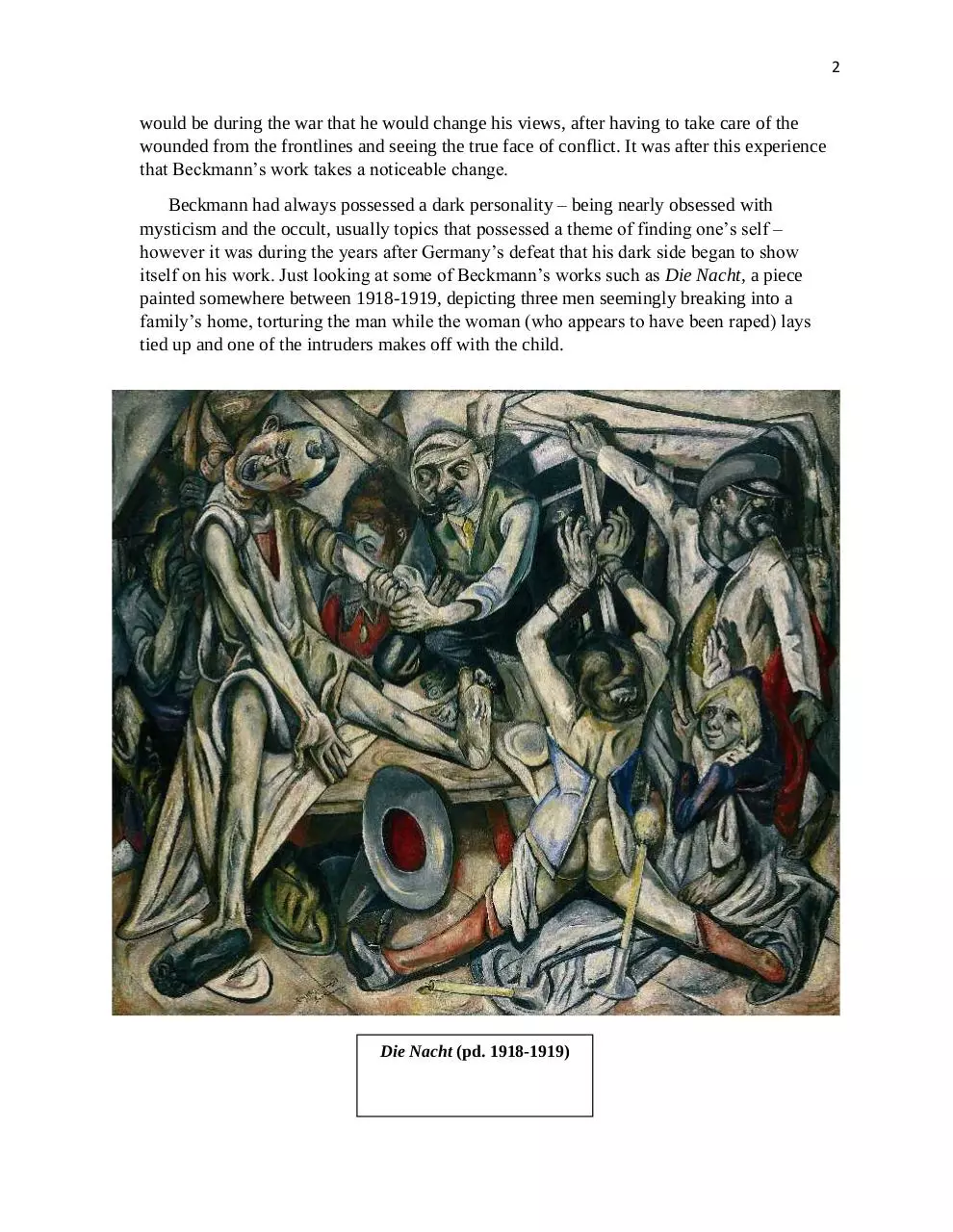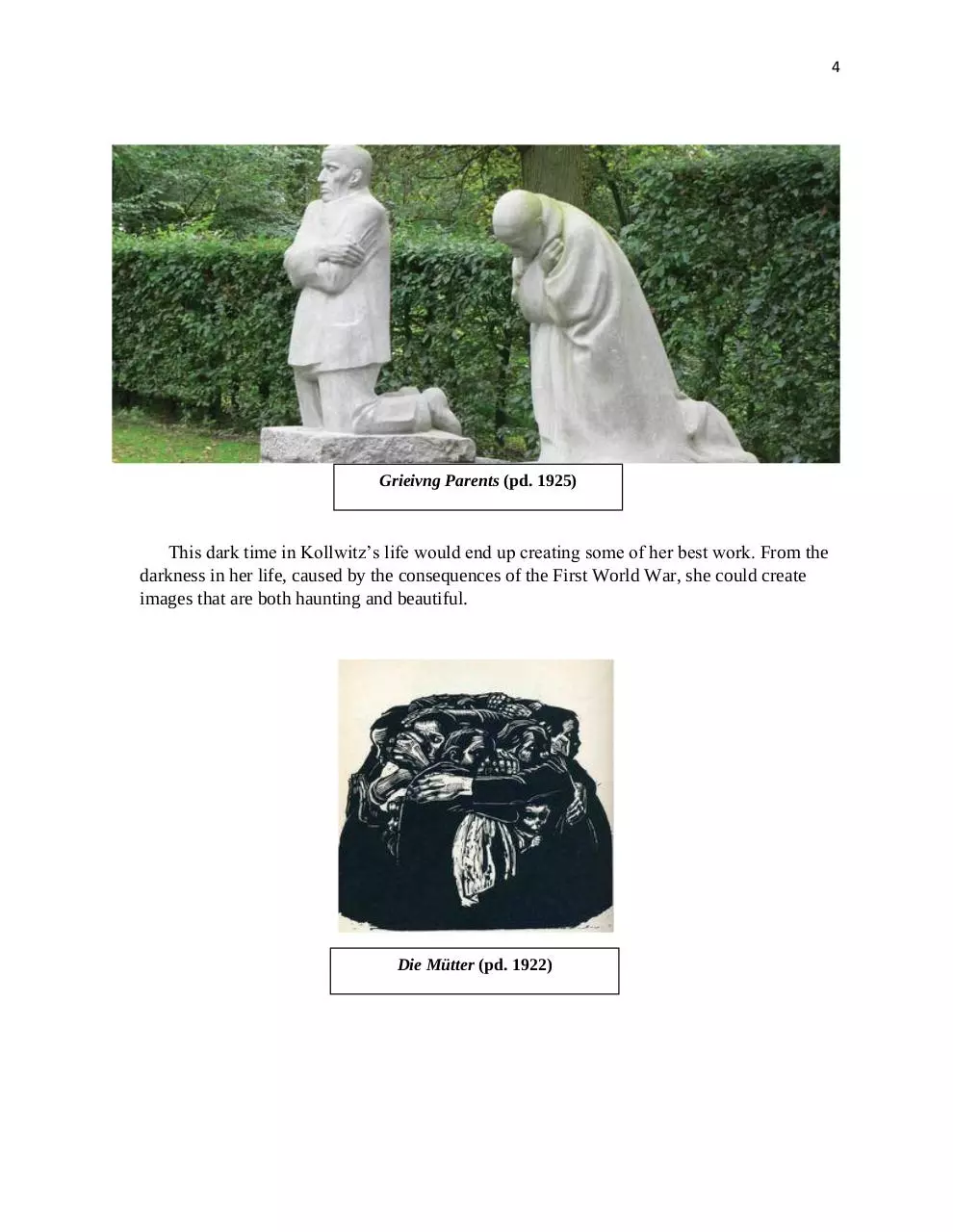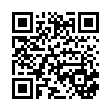The New Objectivity (PDF)
File information
Title: Die
Author: David Weinbel
This PDF 1.5 document has been generated by Microsoft® Word 2016, and has been sent on pdf-archive.com on 26/03/2017 at 04:20, from IP address 158.135.x.x.
The current document download page has been viewed 395 times.
File size: 1.48 MB (10 pages).
Privacy: public file





File preview
DIENEUE SACHLICHKEIT
David Weinbel
1
Art is more than just a few paintings and drawings. Art is the expression of culture; it acts
as a window into the very soul of a civilization. No art movement is a better example of this
than the famous German post-World War One artistic movement known as die Neue
Sachlichkeit, translated in English as the New Objectivity. The New Objectivity gave insight
into the effects of the First World War on the mental and emotional state of the people who
suffered the war then and who remember the war now. However, to understand the deeper
meaning of the New Objectivity, one must know the history behind the movement.
With the breakout of the First World War – known at the time as the Great War – it
became apparent that the conflict would be unlike anything the world had seen before. With
casualties reaching insane numbers from battles such as the Somme - 420,000 British
casualties, 200,000 French casualties, and an estimated 467,000 German casualties (Jenny
Higgins, 2015) – the entire world became absolutely shocked at this level of destruction
never seen before. However, the ones who truly felt the effect of the war were the soldiers on
the ground.
It was in 1918-1919, when the war finally ended and the men on the frontlines started
coming home, that the scars of conflict began to show. Thousands of veterans, haunted by
visions of the things they saw and did during the war, flooded the belligerent countries of the
First World War. The National Center for Post-Traumatic Stress Syndrome (PTSD) describes
some of the symptoms of PTSD as being “Jitters,” “Reliving the event,” and “Negative
changes in beliefs or feelings”. Reports of veterans feeling these exact symptoms flooded
hospitals. At the time, the only diagnoses the doctors of the time was “Shell Shock”.
However, these damaged veterans would leave a greater mark than just being damaged.
In Post-World War One Germany, now attempting to rebuild after four years of the most
destructive war the world had ever seen up until then, the damage of the conflict truly
showed itself in the artforms of the period. Around this period, many Germans took up art as
a way of expressing their pain and several of them are deeply remembered today.
One of these renowned artists is the famous Max Beckmann. Born February 12, 1884,
Beckmann showed an early interest in the arts. He attended art classes for years as a child
and even created his first self-portrait in 1898 at the age of 14. In 1900, Beckmann entered
die Grossherzoglich-Sachsische Kunstschule Weimar (the Weimar-Saxon Grand Ducal Art
Academy) focusing on painting. However, he would not be stuck there for long before he
would begin studying abroad, traveling the world, and receiving more influences for his art.
During this time, Beckmann would become influenced by famous German philosopher
Friedrich Nietzsche and fellow painters Vincent van Gogh and Edvard Munch, adapting their
dramatic styles into his own works. Max Beckmann was doing well expanding his art career,
and with great promise.
However, he would truly begin to grow after the First World War. When the war started,
like so many young Germans at the time, Beckmann enlisted into the German army as a
Medical Orderly, eager to serve his country. Beckmann joined the war with a strong belief
(like many Futurist artists) that war was unavoidable and the only way to cleanse society. It
2
would be during the war that he would change his views, after having to take care of the
wounded from the frontlines and seeing the true face of conflict. It was after this experience
that Beckmann’s work takes a noticeable change.
Beckmann had always possessed a dark personality – being nearly obsessed with
mysticism and the occult, usually topics that possessed a theme of finding one’s self –
however it was during the years after Germany’s defeat that his dark side began to show
itself on his work. Just looking at some of Beckmann’s works such as Die Nacht, a piece
painted somewhere between 1918-1919, depicting three men seemingly breaking into a
family’s home, torturing the man while the woman (who appears to have been raped) lays
tied up and one of the intruders makes off with the child.
Die Nacht (pd. 1918-1919)
3
Beckman many works such as Die Nacht, however he was not the only artist with a
darkside.
Käthe Kollwitz was born in the town of Königsberg (now Kalingrad, Russia). Early on,
she showed signs of talent in art. At first, she did not think of art as a legitimate carrier and
paid no mind to it. Her father though saw her talent and pushed her to keep working, paying
for her to receive art classes, and improve on herself. She studied briefly at the Berlin
Women’s Art Academy, where she not only met her future husband, a medical student in
Berlin, but she also was inspired by the works of artist Max Klinger.
After becoming engaged, Kollwitz went to Munich to study at the Women’s Art School
there. Once finishing her studies, she married Karl, her fiancé, and moved back to Berlin
with him where he tended to the injured poor. It was here that Kollwitz realized her true
talent was painting the suffering of mankind.
Woman With Dead Child (pd. 1903)
Living peacefully in Berlin for several years, Kollwitz’s fortune took a turn for the worst
when the First World War broke out. In October 1914, Kollwitz’s son Peter was killed on the
battlefield, prompting a prolonged depression from Kollwitz. She would attempt to make a
memorial to him in 1919 but promptly tore it down. In 1925, she created it again and dubbed
it The Grieving Parents.
4
Grieivng Parents (pd. 1925)
This dark time in Kollwitz’s life would end up creating some of her best work. From the
darkness in her life, caused by the consequences of the First World War, she could create
images that are both haunting and beautiful.
Die Mütter (pd. 1922)
5
The Survivors (pd. 1923)
The Widow (pd. 1922)
6
Kollwitz would continue to be haunted by sorrow. Later, she would become an avid antiwar advocate, as well as joining the German communist party. She would receive major criticism
and harassment from the Nazis. During the Second World War, not only would her Berlin house
be destroyed in a bombing raid but she would also lose her grandson to the war. She would die
sixteen days before the war. These artists had a profound effect on the world, becoming
renowned for their works. Though, when it comes to the New Objectivity, Kollwitz and
Beckmann, in this author’s opinion, are not the greatest examples of the movement. That title
goes to the famous Otto Dix.
Otto Dix was born in Untermhaus, Germany in 1891. He started his art career by
attending the Kunstgewerbeschule (Academy of Applied Arts) in Dresden. However, at the
outbreak of the First World War, Dix, like many young German men, enthusiastically joined the
army. He would first be placed in a field artillery unit in Dresden, then placed as a noncommissioned officer in a machine gun unit during the Battle of the Somme. In 1917 he was
moved to the Eastern Front until hostilities ended with Russia, then placed back in the West at
Flanders. During his service, he would heavily distinguish himself; earning the Iron Cross and
receiving many promotions.
Though all the medals and promotions in the world could not compensate for the damage
caused to Otto Dix during the war. Not only physical injuries – Dix was shot in the neck during
the Western Spring Offensive – but mental and emotional injuries that no amount of medicine
could fix. Dix reported having recurring dreams of the battlefield and destruction. This suffering
is clearly seen in his own work.
Arguably, Dix’s greatest work was the series of sketches he made on the back of
postcards while he suffered in the trenches: Der Krieg.
Sturmtruppe geht unter Gas vor
[Stormtroopers Advancing Under a
Gas Attack] (pd. 1924)
7
Verwundeter [Wounded Soldier]
(pd. 1924)
Nachtliche Begegnung mit einem
Irrsinnigen [Night-time encounter
with a madman] (pd. 1924)
8
After the war, Dix Would go on to teach art at the Dresden Academy. When the Nazis
rose to power, they regarded Dix as a “degenerate artist” and ordered his dismissal from the
position he held at the Academy. Along with his loss in position, the Nazis ordered the
confiscation of Dix’s artwork. Many of his paintings that were considered “degenerate” were
promptly hidden away by an art dealer and Dix’s son. These paintings were not discovered again
until the year 2012.
During World War II, Dix was arrested for trumped up charges about plotting to kill
Hitler. Once the tide of war began turning against the Wehrmacht in 1944, Dix was conscripted
into the Volkssturm (the conscript militia established by the Nazi party in 1944). At the end of
the war, Dix would be captured by French troops and released in 1946.
Dix would spend the rest of his years living in Dresden and painting. His paintings took a
different turn, becoming pseudo-religious and representing the post war suffering after World
War II, as can be seen in works like Dix’s Ecce Homo with Self-likeness Behind Barbed Wire.
He would die July 25, 1969 after suffering a stroke.
Ecce Homo with Selflikeness Behind
Barbed Wire (pd.
1948)
Download The New Objectivity
The New Objectivity.pdf (PDF, 1.48 MB)
Download PDF
Share this file on social networks
Link to this page
Permanent link
Use the permanent link to the download page to share your document on Facebook, Twitter, LinkedIn, or directly with a contact by e-Mail, Messenger, Whatsapp, Line..
Short link
Use the short link to share your document on Twitter or by text message (SMS)
HTML Code
Copy the following HTML code to share your document on a Website or Blog
QR Code to this page

This file has been shared publicly by a user of PDF Archive.
Document ID: 0000574661.